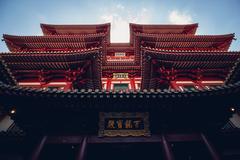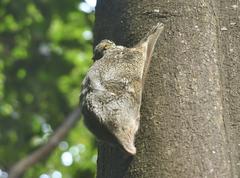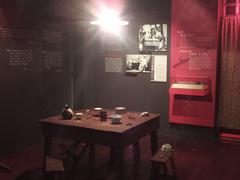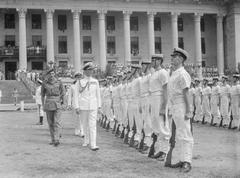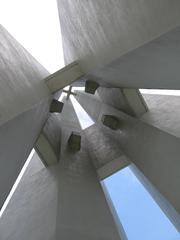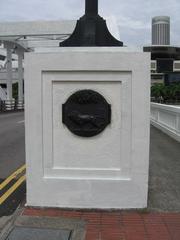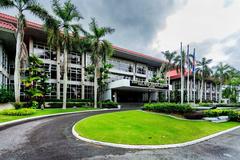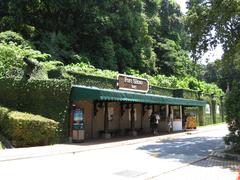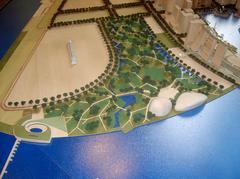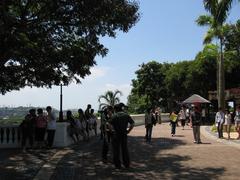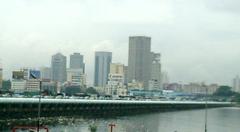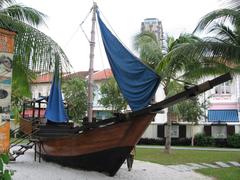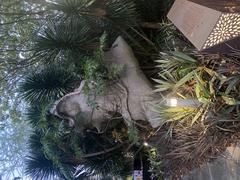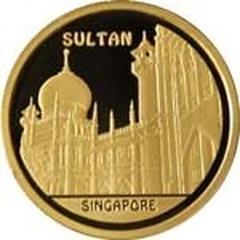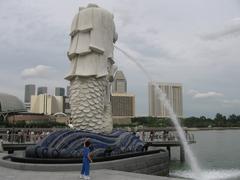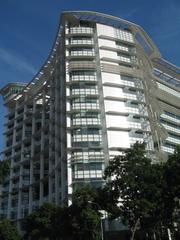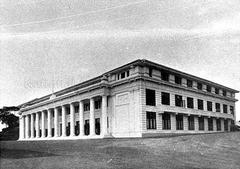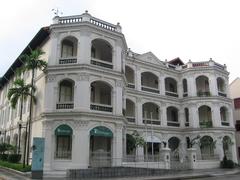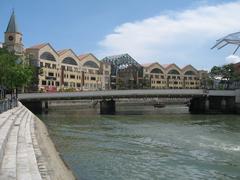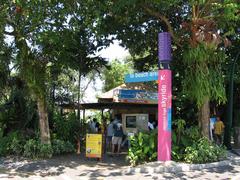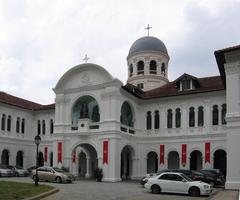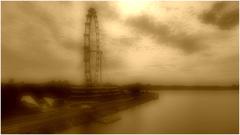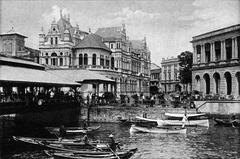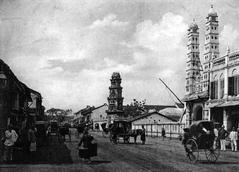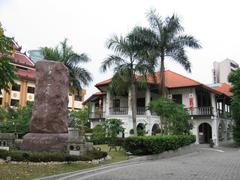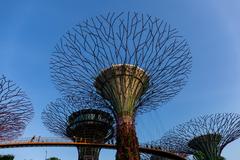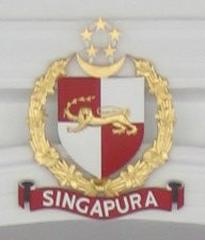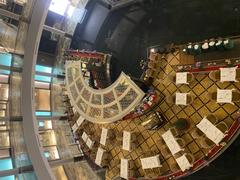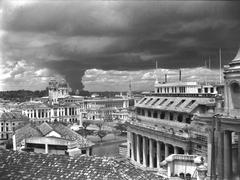
Lim Bo Seng Memorial Visiting Hours, Tickets, and Singapore Historical Sites Guide
Date: 04/07/2025
Introduction
The Lim Bo Seng Memorial stands as a powerful tribute to one of Singapore’s greatest wartime heroes, Major-General Lim Bo Seng. Located in the heart of Esplanade Park, this monument is the only World War II memorial in Singapore dedicated to an individual, underscoring Lim’s vital role in the anti-Japanese resistance. The Lim Bo Seng Memorial not only commemorates his extraordinary courage and sacrifice, but also embodies the multicultural unity and resilience of Singapore’s society. With its distinctive octagonal pagoda architecture and multilingual inscriptions, the site invites visitors to reflect on the nation’s past and the enduring values that shaped modern Singapore.
This guide offers a comprehensive look at the Lim Bo Seng Memorial’s origins, historical and cultural significance, architectural features, visitor information, and practical tips. Whether you are a history enthusiast, traveler, or student, this resource will help you plan an enriching visit to a landmark of remembrance and national pride.
For further insights, refer to resources such as Roots.sg, National Library Board, and Wikipedia.
Table of Contents
- Introduction
- Historical Background and Significance
- Architectural Design and Symbolism
- Construction Timeline
- Multilingual Inscriptions and Cultural Meaning
- Visiting Information
- Educational and Community Engagement
- Nearby Attractions and Travel Tips
- Frequently Asked Questions (FAQ)
- Conclusion
- References
Historical Background and Significance
Origins of the Lim Bo Seng Memorial
After World War II, Singaporeans sought to honor those who made the ultimate sacrifice during the Japanese occupation. The Lim Bo Seng Memorial Committee, comprising representatives from Chinese clan associations and civic groups, was established in 1946 to commemorate Major-General Lim Bo Seng. Initially, the committee proposed a memorial park at MacRitchie Reservoir, but the colonial government selected Esplanade Park, a central and accessible location, for the monument (National Library Board).
The foundation stone was laid on 3 November 1953 by Malcolm MacDonald, Commissioner-General for Southeast Asia. The official unveiling took place on 29 June 1954, ten years after Lim’s death, in a ceremony attended by government officials and Lim’s family (Wikipedia).
Lim Bo Seng: The Man Behind the Memorial
Lim Bo Seng was born in Fujian, China, in 1909 and moved to Singapore as a teenager, where he attended Raffles Institution. Before the war, he was a successful businessman and a leader in the local Chinese community. When the Second Sino-Japanese War broke out, Lim spearheaded anti-Japanese activities and fundraising in Singapore (Roots.sg).
During World War II, Lim joined Force 136, a clandestine unit under the British Special Operations Executive. He played a pivotal role in organizing resistance networks in Malaya and Singapore. Captured by the Japanese in 1944, Lim was tortured but refused to betray his comrades. He died in captivity on 29 June 1944 at the age of 35 and was later buried in Singapore with full military honors (Wikipedia).
Architectural Design and Symbolism
The Lim Bo Seng Memorial was designed by Ng Keng Siang, Singapore’s first overseas-trained architect. The structure features a 3.6-meter-high octagonal pagoda made from Italian white marble and topped with a three-tier bronze roof. Four bronze guardian lions, imported from Hong Kong, stand at its base, symbolizing courage and vigilance (Lionheartlanders).
The design reflects traditional Chinese architecture and values. The octagonal shape symbolizes balance and harmony, while the lotus-pavilion base signifies purity and enlightenment. The use of durable materials like marble and bronze conveys dignity and endurance (TheAsianParent).
Four bronze plaques, inscribed in English, Chinese, Tamil, and Jawi (Malay), detail Lim Bo Seng’s life and sacrifice. This multilingual approach mirrors Singapore’s multicultural society and ensures accessibility for all visitors (Singapore Travel Hub).
Construction Timeline
- 1946: Lim Bo Seng Memorial Committee formed.
- 1953 (November 3): Foundation stone laid by Malcolm MacDonald.
- 1954: Construction completed, costing around $50,000, funded primarily by the Chinese community (National Library Board).
- 1954 (June 29): Official unveiling by Sir Charles Loewen, coinciding with the 10th anniversary of Lim’s death (Wikipedia).
- 2010: Gazetted as a National Monument (Wonderwall.sg).
Multilingual Inscriptions and Cultural Meaning
The memorial’s four bronze plaques provide a concise biography of Lim Bo Seng in the four official languages of Singapore: English, Chinese, Tamil, and Jawi. This inclusive approach reflects the unity and diversity of Singapore’s people during the war and in the present day (TheAsianParent).
Visiting Information
Hours and Admission
- Open: 24 hours daily
- Admission: Free; no tickets required (Lionheartlanders)
Directions and Accessibility
- Location: Esplanade Park, Connaught Drive, Downtown Core, Singapore (Esplanade Park, National Parks Board)
- By MRT: City Hall (EW13/NS25) and Esplanade (CC3) stations are nearby.
- By Bus: Multiple bus services stop along Connaught Drive, Stamford Road, and Fullerton Road.
- By Car/Taxi: Limited parking is available at nearby commercial lots; taxis can drop off at the park entrance.
The memorial and surrounding park are wheelchair accessible with paved paths and ramps.
Visitor Etiquette
- Maintain a respectful silence at the memorial.
- Photography is encouraged; optimal lighting is in the early morning or late afternoon.
- Dispose of litter properly and respect commemorative offerings.
Educational and Community Engagement
The Lim Bo Seng Memorial serves as a focal point for school excursions, heritage trails, and commemorative ceremonies, especially on the anniversary of Lim’s death (June 29), Total Defence Day (February 15), and other remembrance events (Roots.sg). Educational programs and community events foster awareness of Singapore’s wartime history and multicultural values.
Nearby Attractions and Travel Tips
Combine your visit with:
- The Cenotaph: A World War I and II memorial close by.
- Tan Kim Seng Fountain: Celebrates philanthropy and Victorian-era design.
- Asian Civilisations Museum & National Gallery Singapore: For deeper exploration of history and art.
- Marina Bay: For scenic views and further attractions (Singapore Tourism Board).
Tips:
- Visit during off-peak hours for a quieter experience.
- Bring water and sun protection.
- Participate in heritage trails or download the Audiala app for guided tours.
Frequently Asked Questions (FAQ)
Q1: What are the opening hours of the Lim Bo Seng Memorial?
A1: The memorial is open 24 hours daily.
Q2: Is there an admission fee or are tickets required?
A2: No, admission is free; tickets are not required.
Q3: Are guided tours available?
A3: While there are no official guided tours, the memorial is included in many heritage trails and educational programs.
Q4: Is the memorial wheelchair accessible?
A4: Yes, Esplanade Park and the memorial are generally wheelchair-friendly.
Q5: Can I take photographs at the memorial?
A5: Yes, photography is welcome. For drone usage, refer to local aviation regulations.
Conclusion
The Lim Bo Seng Memorial is more than a commemorative structure; it is a living testament to Singapore’s collective memory, multicultural identity, and enduring spirit. Its unique architecture, strategic location, and inclusive features make it a must-visit for anyone interested in Singapore’s rich history. Open around the clock and accessible to all, the memorial continues to inspire visitors through its story of courage and unity.
Plan your visit today to connect with Singapore’s wartime heritage. Enhance your experience by exploring nearby landmarks, joining educational programs, and using digital resources like the Audiala app for guided tours and heritage trails. For more information and updates, consult the National Heritage Board, VisitSingapore, and Lionheartlanders.
References
- Roots.sg
- National Library Board
- Wonderwall.sg
- Lionheartlanders
- Wikipedia: Lim Bo Seng
- Wikipedia: Lim Bo Seng Memorial
- Esplanade Park, National Parks Board
- Singapore Tourism Board






